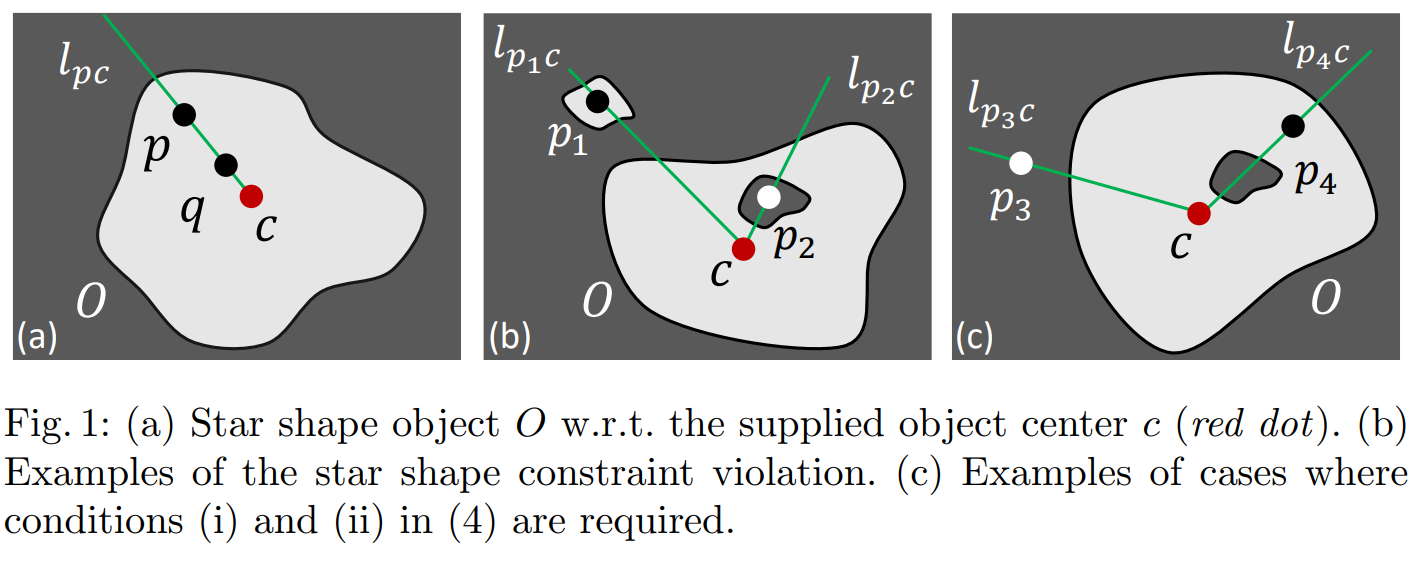Star shape Prior
The authors suggest that the classical approach of using only data fidelity term to train CNN is insufficient.
Inspired by past work on energy functional minimization techniques (ASM, graph-based methods …), they propose to adapt Veksler star shape prior as a loss term.
Star shape Prior
The idea is to penalize predictions that wouldn’t amount to a star shaped object.
“Assuming c is the center of object O, object O is a star shape object if, for any point p interior to the object, all the pixels q lying on the straight line segment connecting p to the object center c are inside the object”.

Here is the expression of the new loss term that they combine to a binary cross entropy loss :

Basically, it enforces that with p and q any incident pixel on line l_pc, c being the groundtruth center, q should have the same label as p if they have the same grountruth labels and if p is assigned to the wrong class. Discontinuities of pixel labels on l_pc are only allowed on lesion boundaries and if the givel label is true.
Experiments
They use two CNN architectures : U-Net and ResNet-DUC (Res-Net-152 pretrained on ImageNet).
They apply this on the Skin Lesion Analysis Towards Melanoma Detection Challenge (ISBI 2017), composed of 2000 (train) + 150 (valid) + 600 (test) images. Only 0.14% of the groundtruths skin lesions are not star-shaped.
They add the second term loss after 5 epochs. In practice, they only consider the m closest pixels to p on d directions (m = 6, d = 8).
Here are the Jaccard index results :

For each experiment, they also computed a non-parametric Wilcoxon test that showed that the networks with and without the prior are statistically different at p < 0.05.
Here is a visualization of the results :
